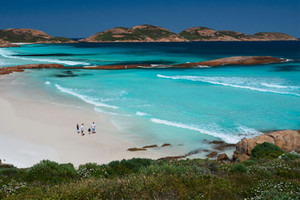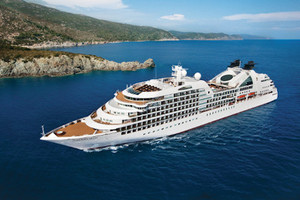
As the plastic buoy is dragged across the water’s surface, nobody is expecting the explosion that signals the presence of a four metre saltwater crocodile. Like a thunderclap, the salty's jaws clamp around the “intruder”. This is his territory and god help anybody or anything that dares come near it. This is “Croc Country” but it’s not far north Queensland, and the locals in Broome say their reptiles are the meanest, and deadliest, in the world. It’s a remote outpost with a relaxed atmosphere, natural wonders and wildlife, and as we discovered, Broome is one of those fortunate destinations which truly has it all.
The Crocs
The Malcolm Douglas Crocodile Park is more than just a tourist attraction: it’s a wildlife refuge and research station rolled into one and is designed to educate the public about the dangers of encountering crocs. The farm at Cable Beach just outside Broome is the brainchild of well known adventurer and veteran wildlife documentary maker Malcolm Douglas. Australia’s “original croc hunter” died in a tragic accident on his property in 2010, but his legacy is this sanctuary for “renegade” reptiles from northern Western Australia, some of which have attacked or posed a major threat to animals and humans. And as the croc hunter himself famously said: “You won’t find me over that fence at any stage, no way. That’s their domain and they protect it ruthlessly.”
Unlike many crocodile parks, where tourism is the major reason for their existence, there is no “show” with a handler sitting on a croc’s back or teasing it out of the water with food. This is all about education with potentially life saving tips on how to avoid crocodiles in their natural habitat. It’s a wildlife experience which captures the essence of the far north-west of Australia, and the drive out from Broome is a great way to get a taste of the real outback in itself.
Broome Highlights And History
As we bounced along one of the dirt tracks on the outskirts of town, colourful birds darted in between the trees flanking the roadside. The occasional lizard scurried across our path, forsaking one patch of scrub for another. And the last of the season’s grasshoppers took flight out of the dirt. We’d already covered the sights of Broome itself: the charming Pearl Lugger’s Museum; the Japanese Cemetery where hundreds of pearl divers’ graves are testament to the dangers of pearling; the Broome Historical Museum; and Chinatown and the Sun Picture House. It’s all a part of Broome’s frontier charm which sets it apart from other tourist destinations in Australia. These days resorts are springing up in the town, especially on Cable Beach, but it’s not difficult to tap into the outback charm and fascinating history of this isolated outpost.
Located 2200 kilometres north of Perth, Broome began life as a pearling centre in 1883 with just a handful of pearling luggers and a few shanties, and to this day the pearl industry is the backbone of the town’s economy. Within a decade of Broome’s foundation, port facilities were established and a cosmopolitan population of Chinese, Aboriginals, Malays, Filipinos and Europeans developed as the worldwide demand for pearls increased. Before the outbreak of World War One, 403 pearl luggers were registered and a running joke was that you could walk across Roebuck Bay without getting your feet wet when they were all in port. The outbreak of war killed off the industry and Broome’s economy collapsed, but by the 1930s it had recovered and Japanese crews dominated the ports.
By the outbreak of World War Two, Japanese people outnumbered Australians, and they were all interned, sending the economy into its second major depression. The Japanese Cemetery on the outskirts of town is testament to Japan’s important links with Broome, and just how dangerous pearl diving was in the early days. It’s the largest Japanese Cemetery in Australia, with 707 graves for 919 people; most of the deaths were the result of the “bends”, a form of divers’ paralysis from going deep and returning to the surface too quickly. Sharks also claimed many lives and two cyclones in 1887 and 1935 are believed responsible for 140 deaths.
The Surrounding Landscape
History aside, it’s the surrounding landscape that makes Broome unique - it’s a coastal centre that has a real outback feel thanks to the red soils of the area, known as “pindan”. The pindan is a vivid red/ochre colour that looks surreal against the azure blue sky of the region and a stark contrast to the dazzling white sand beaches. Gantheaume Point and Roebuck Bay are a short drive out of town and offer a good insight into why so many artists and photographers travel to this area for artistic inspiration. The 22 km-long Cable Beach and Gantheaume Point are the best places to catch a west coast sunset at its very best - the red rocks and soil move through a range of vivid colours, while the calm waters reflect the orange sunlight. It’s all a part of Broome’s frontier charm which sets it apart from other tourist destinations in Australia.
- By:
- Ben Hall













